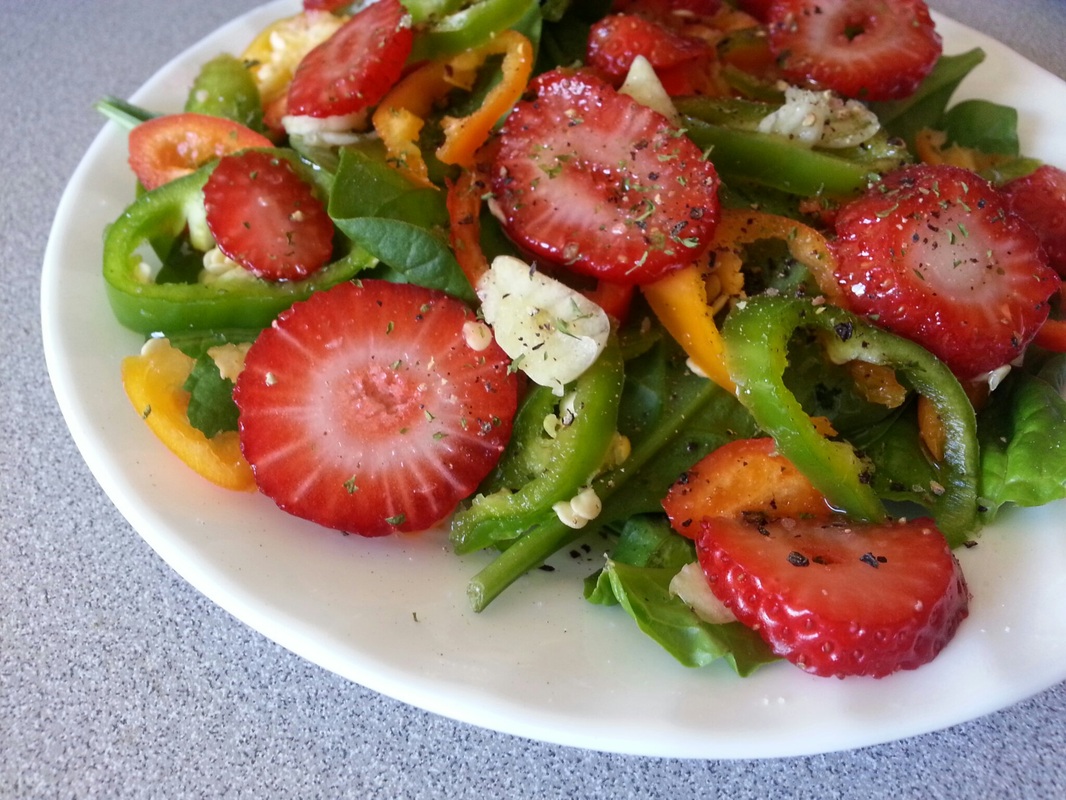Autumn adorns the grass in crystal robes, the river in a wispy veil, and crowns the trees gold. The breeze grows crisp as the leaves underfoot.
Amid the silence of our summer birds enters a forgotten sound, and slowly, we remember. It may come on a bus. It may come as the chill ushers us behind closed doors. It may come as the morning wakes the fragile form of a child. That is how it has come, this year, for me. A soft sniffle, paired with that wide-eyed look, full of expectation and the desire to understand this discomfort which has taken hold. The first furtive search for the tissue which you never realized had been absent from the nearest box since, when?
Now that we remember, it's time to get our head in the game. Here is information about preventative steps you may wish to consider this autumn.
Vitamin C
Vitamin C is a great help in staying healthy, especially if you are obtaining it naturally. If you are choosing to avoid corn, you will also need to avoid synthetic vitamin C (ascorbic acid) as it is corn derived. How blessed we are that we have access to excellent sources!
Vitamin C
Vitamin C is a great help in staying healthy, especially if you are obtaining it naturally. If you are choosing to avoid corn, you will also need to avoid synthetic vitamin C (ascorbic acid) as it is corn derived. How blessed we are that we have access to excellent sources!
Capsicum (Peppers!)
Peppers have been getting a lot of attention lately for their health benefits. One big benefit is that they are packed with Vitamin C. For an introduction to some of the other benefits, read this article on the health benefits of capsicum. Peppers are a great addition to your autumn food repertoire, whether as an upbeat snack or a delicious dinner addition. Sweet bell peppers with a raw zucchini hummus take advantage of in-season produce. Flavour your dinner with paprika, cayenne, chili, chipotle, or your favourite spicy pepper. Store your fresh peppers for year round Vitamin C with a dehydrator, or preserve them as a salsa or jam. Raw capsicum is a much better source of Vitamin C than cooked. Fun pepper fact: Red and green bell peppers are the same! Reds are a riper version of green. Orange peppers are a riper version of yellow.
Peppers have been getting a lot of attention lately for their health benefits. One big benefit is that they are packed with Vitamin C. For an introduction to some of the other benefits, read this article on the health benefits of capsicum. Peppers are a great addition to your autumn food repertoire, whether as an upbeat snack or a delicious dinner addition. Sweet bell peppers with a raw zucchini hummus take advantage of in-season produce. Flavour your dinner with paprika, cayenne, chili, chipotle, or your favourite spicy pepper. Store your fresh peppers for year round Vitamin C with a dehydrator, or preserve them as a salsa or jam. Raw capsicum is a much better source of Vitamin C than cooked. Fun pepper fact: Red and green bell peppers are the same! Reds are a riper version of green. Orange peppers are a riper version of yellow.
Kiwi (Chinese Gooseberry)
Kiwi has more Vitamin C than oranges. I eat a lot of kiwi when it goes on sale. My local produce store features them at 3/$1 this time of year. In case you were wondering whether you can eat the skin, the answer is... yes! The texture may take some getting used to, but I always eat the skin. Why waste those nutrients? I also find myself much more likely to snack on kiwi when I don't have to deal with the mess of painstakingly removing the skin. I do usually throw out the hard parts on the ends (compost if you can!).
Some of you mothers out there might be thinking of whether you can get your children to eat the skins. I have to say that my children have never been picky about... anything. Maybe poor presentation, but I am yet to encounter a flavour or texture they refuse (beyond perhaps needing a few exposures before embracing). As a result, my advice is either great or awful for you. I love the philosophy of introducing foods known as Baby-Led Weaning (beyond the scope of today's post). I would attribute this, coupled with the joy I always express when sharing new foods with my children, to our success. My pattern is this: first, love the food myself; second, share with joy. I find my children want to share in my joy, and it makes the all the difference.
Kiwi has more Vitamin C than oranges. I eat a lot of kiwi when it goes on sale. My local produce store features them at 3/$1 this time of year. In case you were wondering whether you can eat the skin, the answer is... yes! The texture may take some getting used to, but I always eat the skin. Why waste those nutrients? I also find myself much more likely to snack on kiwi when I don't have to deal with the mess of painstakingly removing the skin. I do usually throw out the hard parts on the ends (compost if you can!).
Some of you mothers out there might be thinking of whether you can get your children to eat the skins. I have to say that my children have never been picky about... anything. Maybe poor presentation, but I am yet to encounter a flavour or texture they refuse (beyond perhaps needing a few exposures before embracing). As a result, my advice is either great or awful for you. I love the philosophy of introducing foods known as Baby-Led Weaning (beyond the scope of today's post). I would attribute this, coupled with the joy I always express when sharing new foods with my children, to our success. My pattern is this: first, love the food myself; second, share with joy. I find my children want to share in my joy, and it makes the all the difference.
Dark Leafy Greens
Bring on the green smoothies, collard wraps, kale chips, and salads! Raw is best, but if you are cooking, they are so easy to toss.
Are you reluctant to embrace kale because of the flavour or texture? Don't eat the bitter stem. Think of it more like broccoli (also high in Vitamin C) than like spinach. Beat the texture by blending or dehydrating. Chiffonade to decrease the bulk. Pair with other strong flavours that you enjoy.
Don't forget herbs. Parsley is packed with Vitamin C. Thyme is great, but I personally avoid it while pregnant or breastfeeding.Food storage tips: Freeze or dehydrate your summer leafy greens. Overwinter your kale or maché in cold frames. Don't forget to wild-harvest your wild greens. Keep some year-round fresh with indoor gardening or hydroponics. Maximize the useable vitamins in your food storage by sprouting!
Bring on the green smoothies, collard wraps, kale chips, and salads! Raw is best, but if you are cooking, they are so easy to toss.
Are you reluctant to embrace kale because of the flavour or texture? Don't eat the bitter stem. Think of it more like broccoli (also high in Vitamin C) than like spinach. Beat the texture by blending or dehydrating. Chiffonade to decrease the bulk. Pair with other strong flavours that you enjoy.
Don't forget herbs. Parsley is packed with Vitamin C. Thyme is great, but I personally avoid it while pregnant or breastfeeding.Food storage tips: Freeze or dehydrate your summer leafy greens. Overwinter your kale or maché in cold frames. Don't forget to wild-harvest your wild greens. Keep some year-round fresh with indoor gardening or hydroponics. Maximize the useable vitamins in your food storage by sprouting!
Guava and Papaya
Excellent souces of Vitamin C, and delicious! Papaya is really easy to scoop with a melon baller and adds great variation to fruit salad. Papaya is wonderful dehydrated too.
Excellent souces of Vitamin C, and delicious! Papaya is really easy to scoop with a melon baller and adds great variation to fruit salad. Papaya is wonderful dehydrated too.
Strawberries and Citrus
These easily accessible fruits are a tasty way to get your vitamin C! Try a Strawberry Lemonade green smoothie: 1 banana, 1 whole lemon, 1-2 handfuls of spinach, and 1 cups strawberries. Chop the lemon before blending and add water to blend/thin.
These easily accessible fruits are a tasty way to get your vitamin C! Try a Strawberry Lemonade green smoothie: 1 banana, 1 whole lemon, 1-2 handfuls of spinach, and 1 cups strawberries. Chop the lemon before blending and add water to blend/thin.
In honour of Vitamin C, I am sharing this Vitamin C - packed salad!
Zingy Weather-Busting Salad
Ingredients:
2 small handfuls of baby spinach
3 mini bell peppers or 1 regular, sliced
2 strawberries, sliced
1 clove garlic, shaved*
sprinkling of parsley
small splash apple cider vinegar (preferably unpasteurized)
light drizzle extra virgin olive oil
freshly ground black pepper to taste
sea salt or rock salt to taste
*mince your garlic and combine with oil, vinegar, parsley, salt, and pepper in a dressing if you are concerned about the flavour being strong.
Thanks for reading, and stay tuned for part 2!
Zingy Weather-Busting Salad
Ingredients:
2 small handfuls of baby spinach
3 mini bell peppers or 1 regular, sliced
2 strawberries, sliced
1 clove garlic, shaved*
sprinkling of parsley
small splash apple cider vinegar (preferably unpasteurized)
light drizzle extra virgin olive oil
freshly ground black pepper to taste
sea salt or rock salt to taste
*mince your garlic and combine with oil, vinegar, parsley, salt, and pepper in a dressing if you are concerned about the flavour being strong.
Thanks for reading, and stay tuned for part 2!


 RSS Feed
RSS Feed